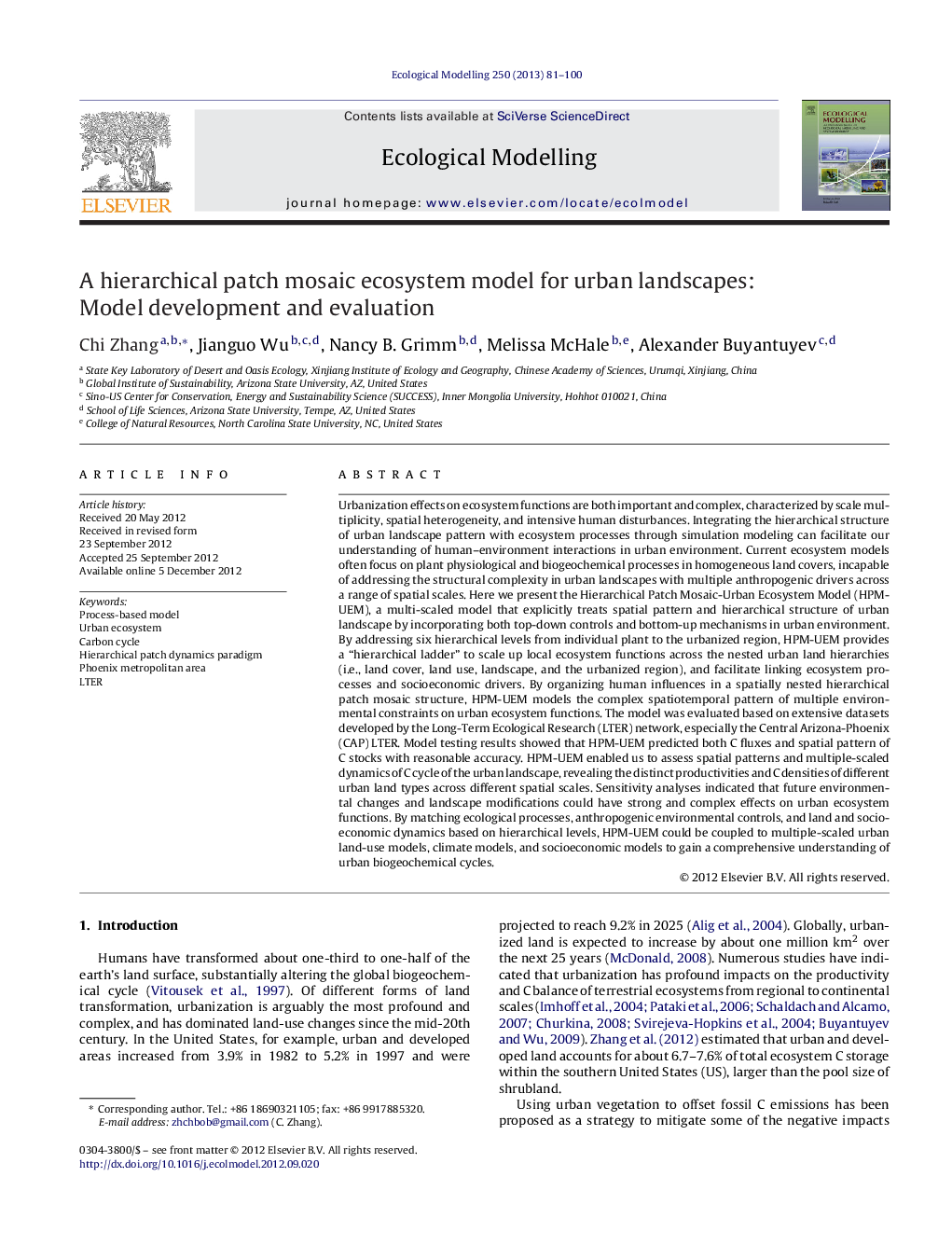| کد مقاله | کد نشریه | سال انتشار | مقاله انگلیسی | نسخه تمام متن |
|---|---|---|---|---|
| 4376238 | 1617495 | 2013 | 20 صفحه PDF | دانلود رایگان |

Urbanization effects on ecosystem functions are both important and complex, characterized by scale multiplicity, spatial heterogeneity, and intensive human disturbances. Integrating the hierarchical structure of urban landscape pattern with ecosystem processes through simulation modeling can facilitate our understanding of human–environment interactions in urban environment. Current ecosystem models often focus on plant physiological and biogeochemical processes in homogeneous land covers, incapable of addressing the structural complexity in urban landscapes with multiple anthropogenic drivers across a range of spatial scales. Here we present the Hierarchical Patch Mosaic-Urban Ecosystem Model (HPM-UEM), a multi-scaled model that explicitly treats spatial pattern and hierarchical structure of urban landscape by incorporating both top-down controls and bottom-up mechanisms in urban environment. By addressing six hierarchical levels from individual plant to the urbanized region, HPM-UEM provides a “hierarchical ladder” to scale up local ecosystem functions across the nested urban land hierarchies (i.e., land cover, land use, landscape, and the urbanized region), and facilitate linking ecosystem processes and socioeconomic drivers. By organizing human influences in a spatially nested hierarchical patch mosaic structure, HPM-UEM models the complex spatiotemporal pattern of multiple environmental constraints on urban ecosystem functions. The model was evaluated based on extensive datasets developed by the Long-Term Ecological Research (LTER) network, especially the Central Arizona-Phoenix (CAP) LTER. Model testing results showed that HPM-UEM predicted both C fluxes and spatial pattern of C stocks with reasonable accuracy. HPM-UEM enabled us to assess spatial patterns and multiple-scaled dynamics of C cycle of the urban landscape, revealing the distinct productivities and C densities of different urban land types across different spatial scales. Sensitivity analyses indicated that future environmental changes and landscape modifications could have strong and complex effects on urban ecosystem functions. By matching ecological processes, anthropogenic environmental controls, and land and socioeconomic dynamics based on hierarchical levels, HPM-UEM could be coupled to multiple-scaled urban land-use models, climate models, and socioeconomic models to gain a comprehensive understanding of urban biogeochemical cycles.
► We developed a model for complex urban ecosystem based on Hierarchical Patch Theory.
► Multiple natural and anthropogenic stresses are considered at each hierarchical level.
► Carbon, water, nitrogen, and energy cycles were coupled in this process-based model.
► The model was applied to the Phoenix, AZ metropolitan region for evaluation.
Journal: Ecological Modelling - Volume 250, 10 February 2013, Pages 81–100